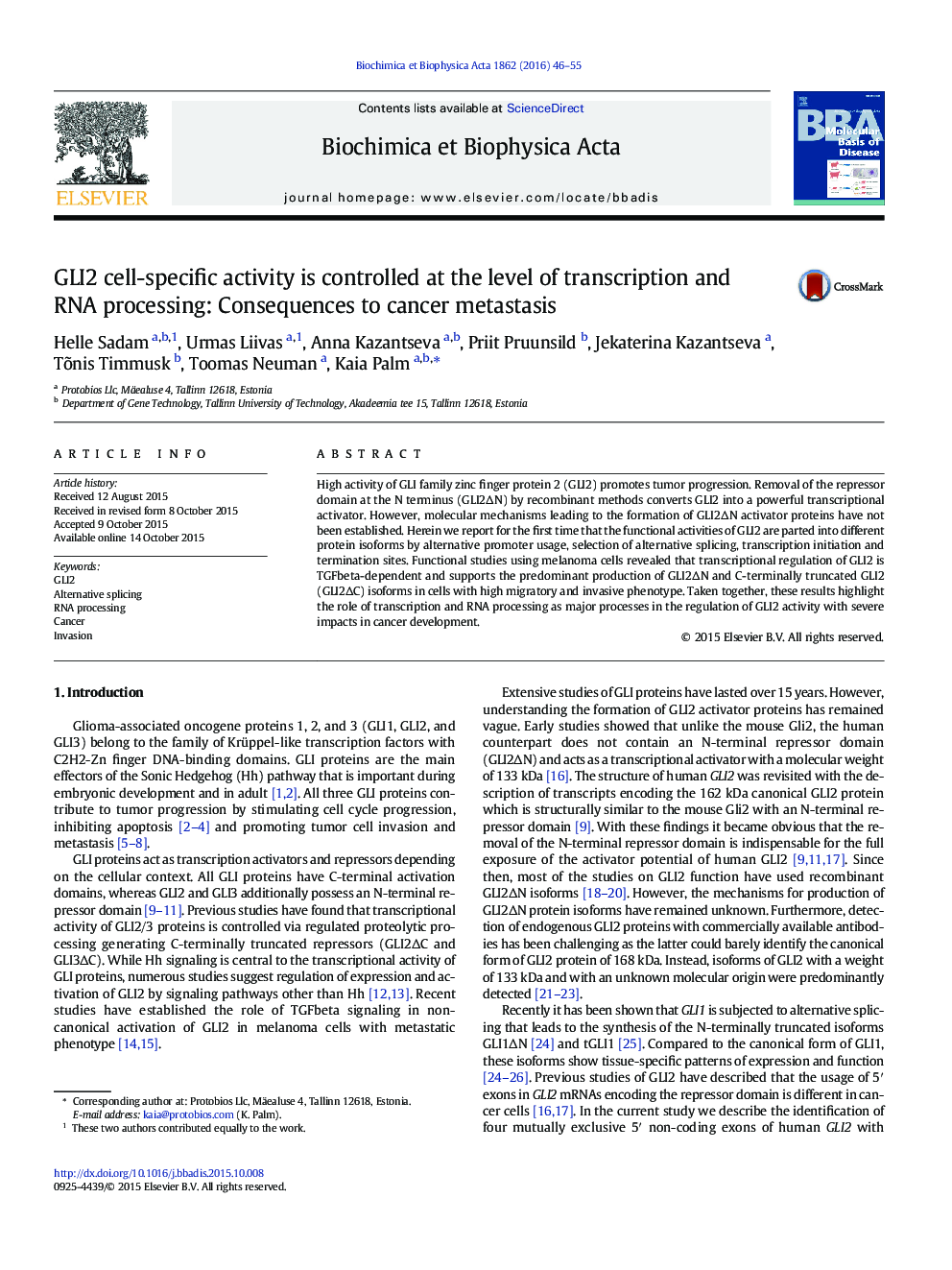| Article ID | Journal | Published Year | Pages | File Type |
|---|---|---|---|---|
| 1904466 | Biochimica et Biophysica Acta (BBA) - Molecular Basis of Disease | 2016 | 10 Pages |
•RNA processing is the key process determining tissue-specific activity of GLI2.•Usage of alternative transcription initiation/termination sites generates N- and C-terminally truncated GLI2.•High expression of N- and C-terminally truncated GLI2 is coupled to melanoma invasion.•RNA processing of GLI2 is TGFbeta-dependent in melanoma
High activity of GLI family zinc finger protein 2 (GLI2) promotes tumor progression. Removal of the repressor domain at the N terminus (GLI2∆N) by recombinant methods converts GLI2 into a powerful transcriptional activator. However, molecular mechanisms leading to the formation of GLI2∆N activator proteins have not been established. Herein we report for the first time that the functional activities of GLI2 are parted into different protein isoforms by alternative promoter usage, selection of alternative splicing, transcription initiation and termination sites. Functional studies using melanoma cells revealed that transcriptional regulation of GLI2 is TGFbeta-dependent and supports the predominant production of GLI2∆N and C-terminally truncated GLI2 (GLI2∆C) isoforms in cells with high migratory and invasive phenotype. Taken together, these results highlight the role of transcription and RNA processing as major processes in the regulation of GLI2 activity with severe impacts in cancer development.
